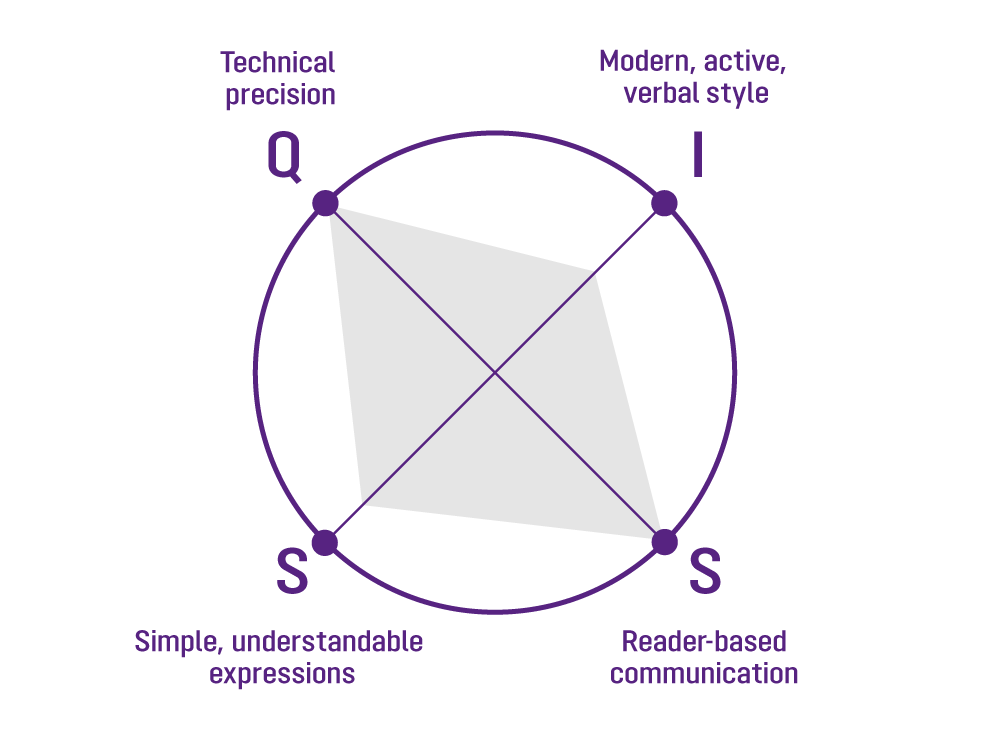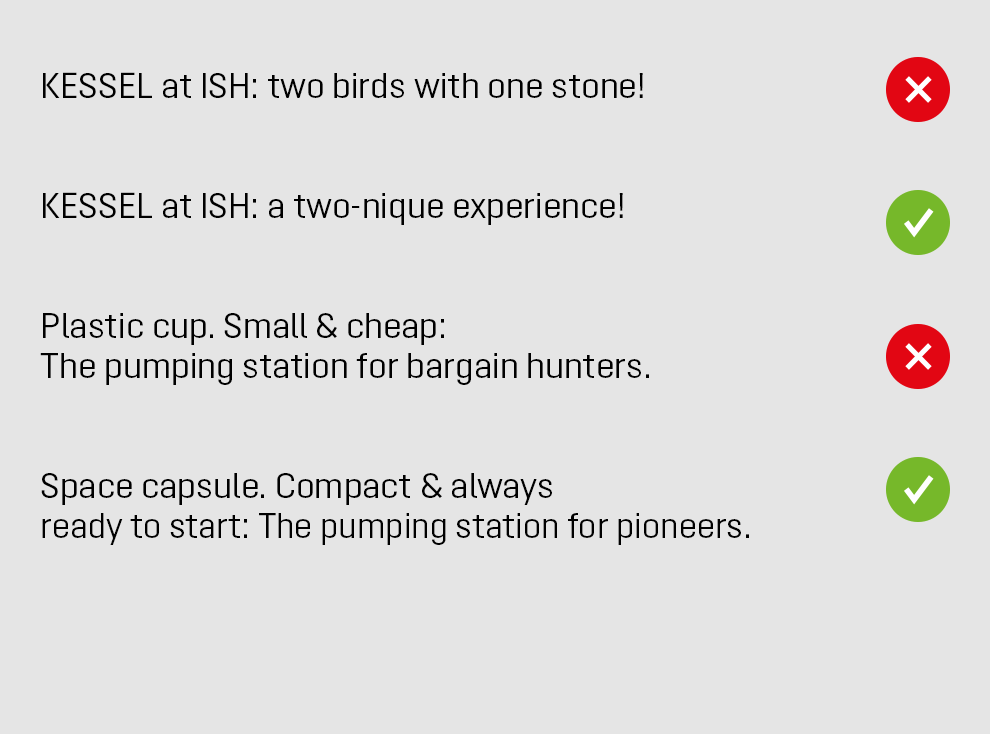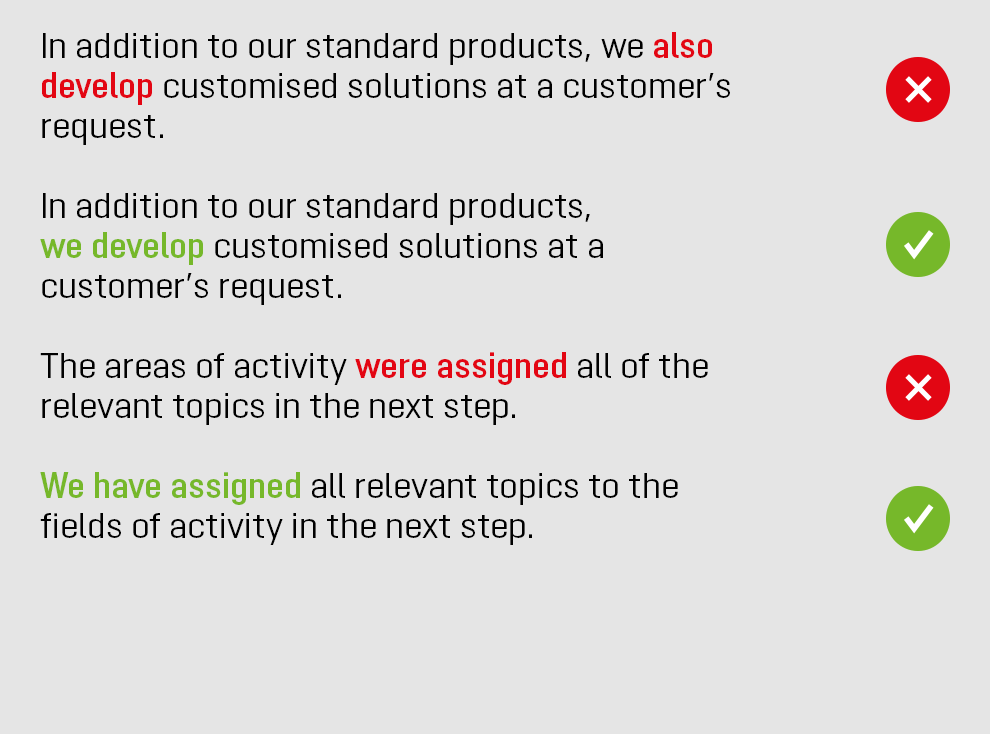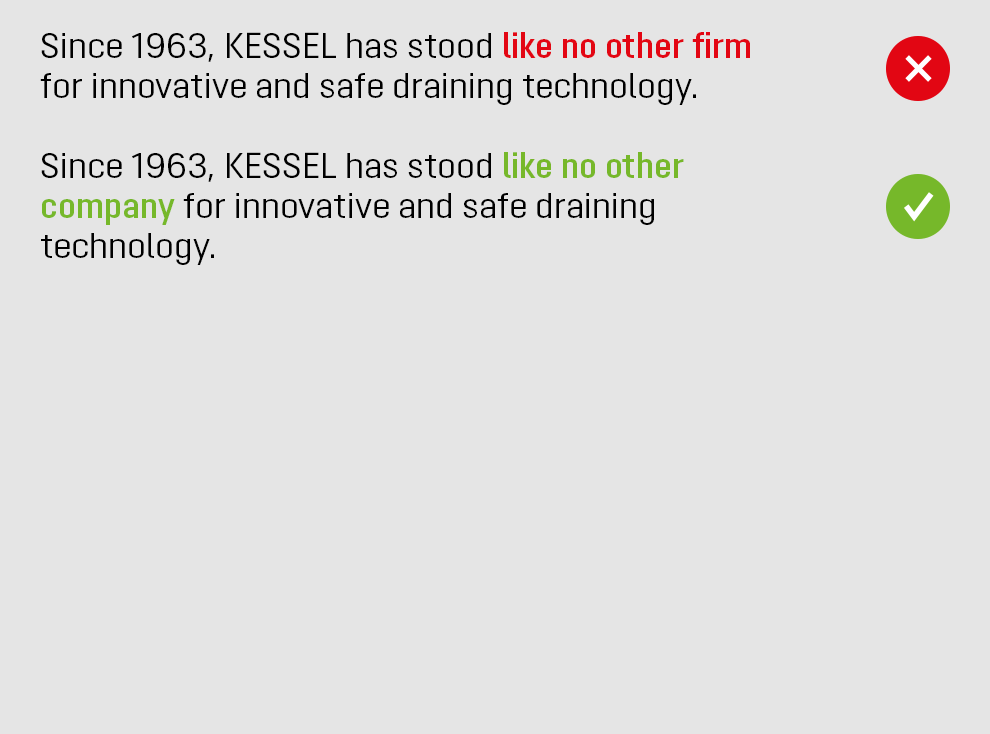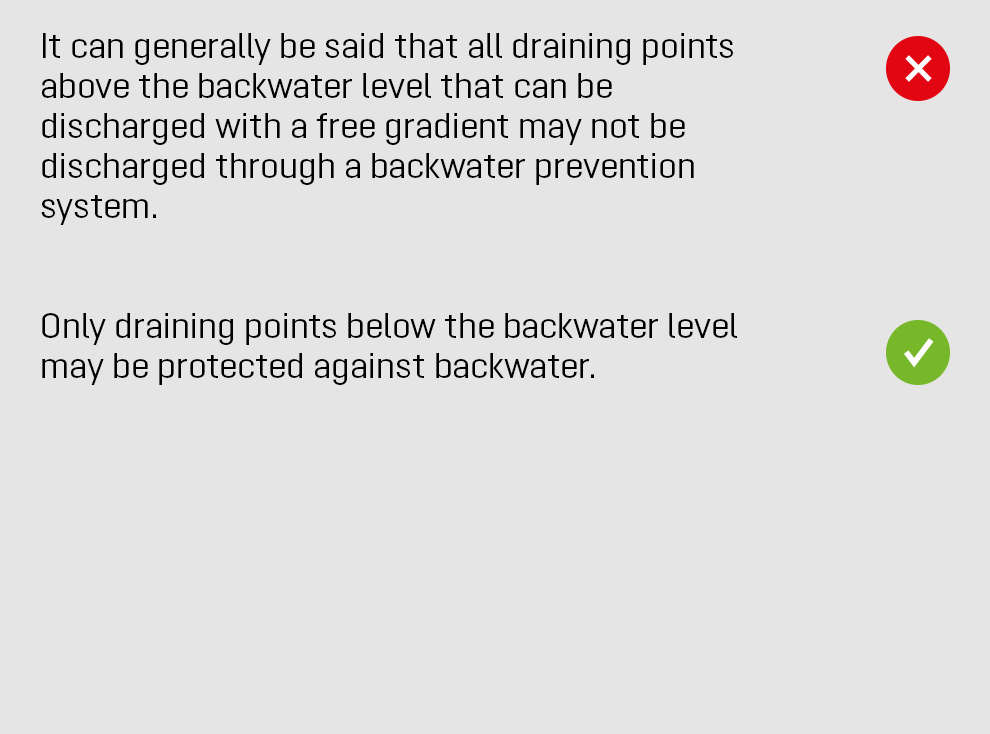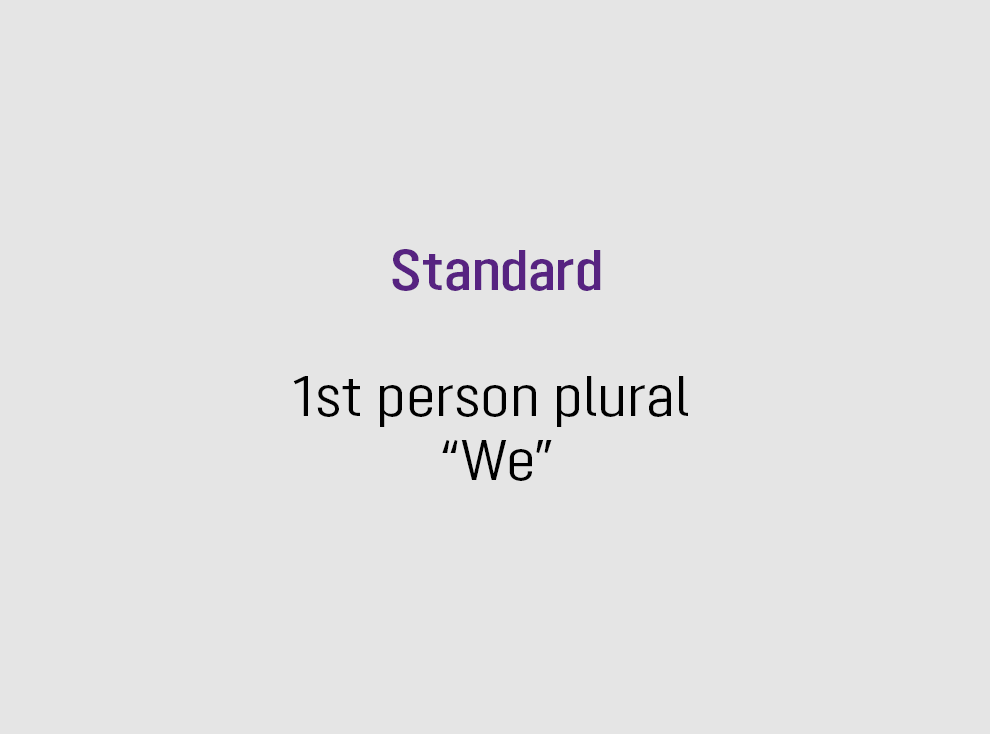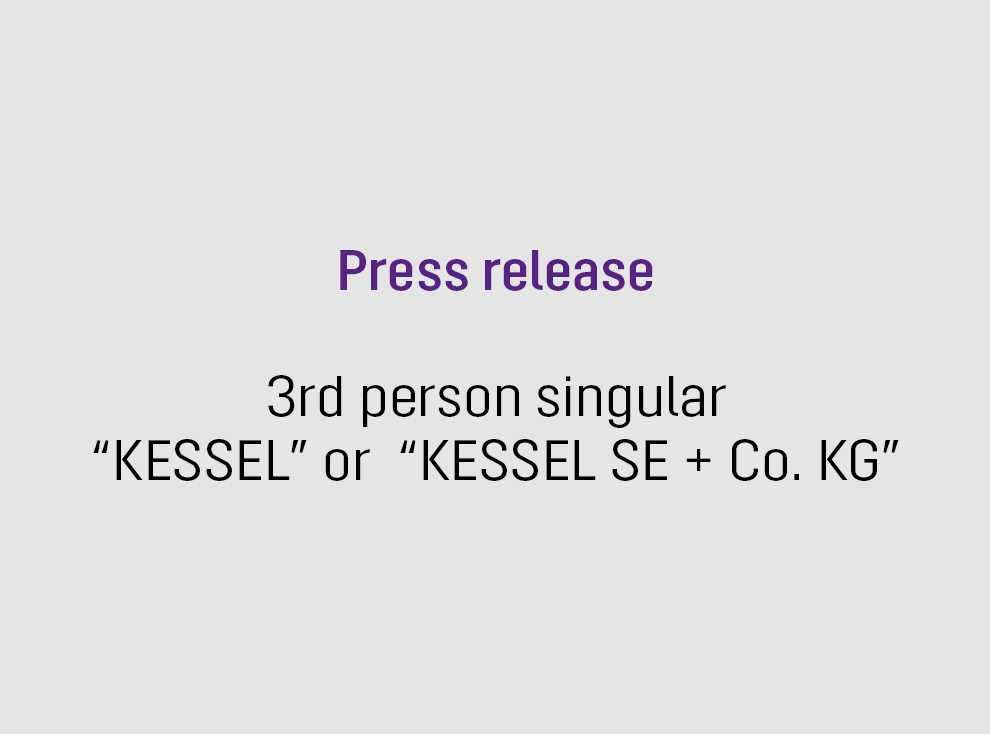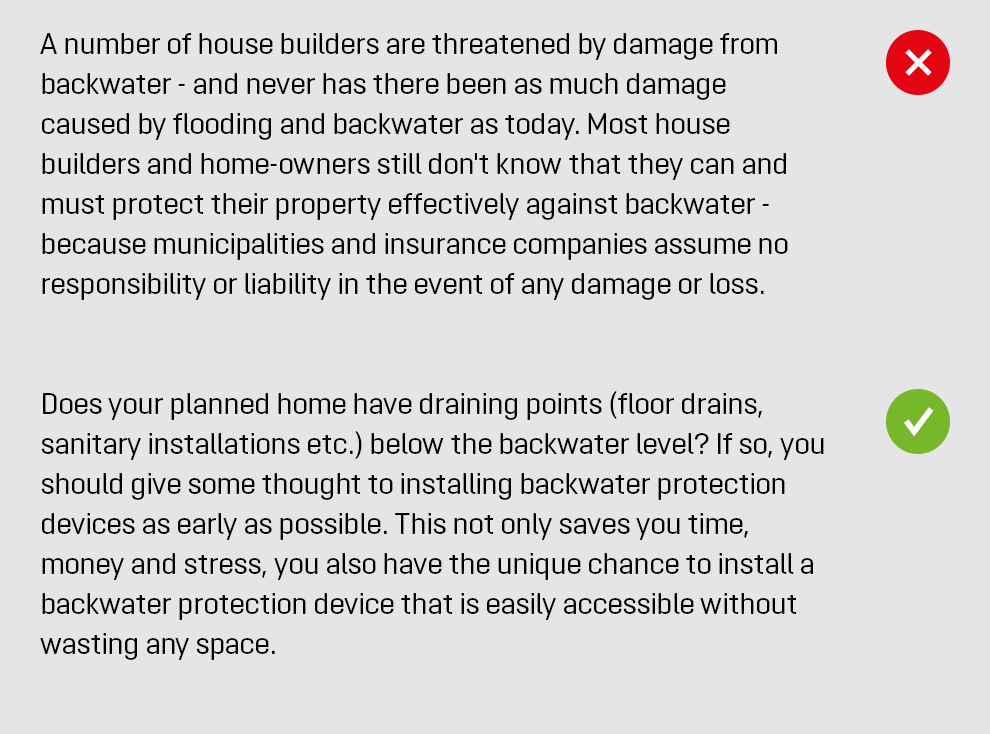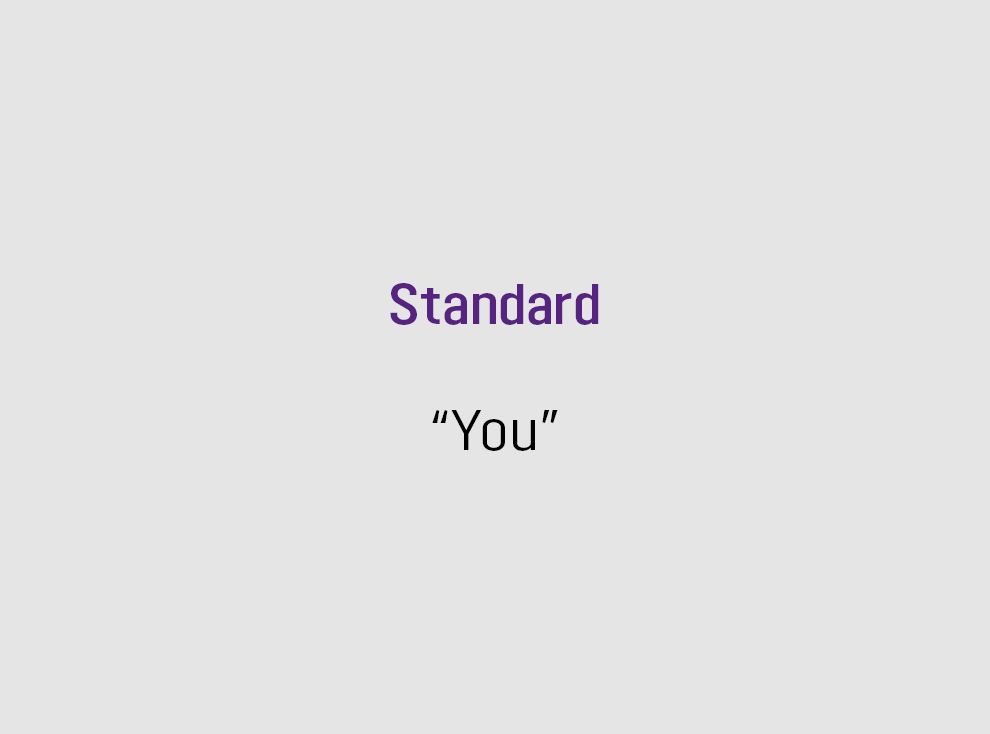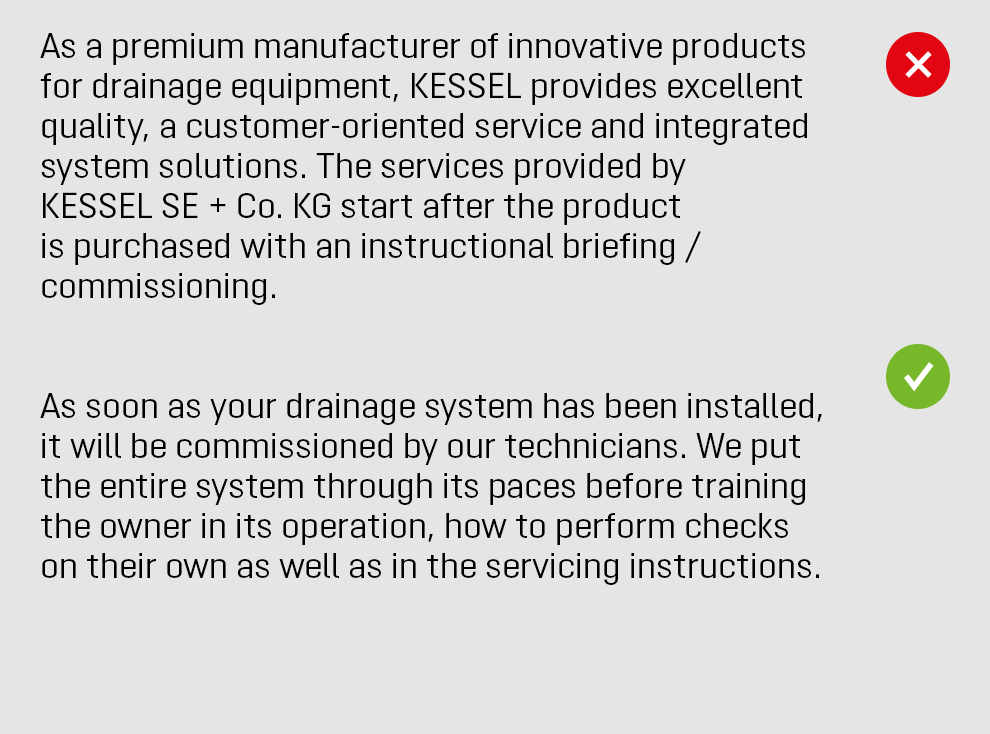A voice with character
We flesh out our values with consistent texts. To this end, we use a coherent narrative voice in our written publications. It determines the character of the brand by means of certain linguistic features.
Overview
The KESSEL voice creates the desired effect by translating our brand values such as quality, innovation, safety and service into human character traits. These are then reflected specifically in purposeful expressions. Dos & Don’ts on the practical implementation can be found below.
| Character trait | Effect | Implementation | |
|---|---|---|---|
| QUALITY | Expertise | Convincing: “They know what they are talking about!” | Technical precision |
| INNOVATION | Intelligence | Impressive: “They know what they are doing!” | Modern, active, verbal style |
| SAFETY | Straightforward | Confidence-inspiring: “They speak plainly!” | Simple, understandable expressions |
| SERVICE | Ready to help | Likeable: “They are there when I need them!” | Reader-based communication |
One voice – numerous applications
The linguistic idiosyncrasies of the KESSEL voice are always perceptible, but may be emphasised differently depending on the communicative goal. You thus have to decide just which side of the KESSEL voice to present in each individual case – for example:
In practice
We bring the KESSEL voice to life with the following rhetorical devices. Read on to learn how the guidelines affect our texts using concrete examples – or select one of the items here to reach the corresponding content directly.
Technical precision
Modern, active, verbal style
Simple, understandable expressions
Technical precision
We know what we are talking about. And to convince our readers of this, we attach great importance to ensuring that the KESSEL voice is technical beyond any possible doubt. Which is why no text leaves our company without a thorough scrutiny. What’s more, we use unambiguous wording as well as standard brand/technical terms and spelling.
Terminology and spellingModern, active, verbal style
We know what we are doing. We let readers feel this by taking the initiative in our texts. This means that we present ourselves as a modern company and rely on active verbs and linguistic acumen, without overdoing things.
Simple, understandable expressions
We speak plainly – and our readers are thankful for this. To ensure that readers get the information they want as quickly as possible, we only make our texts as complex as is absolutely necessary. We achieve this by getting straight to the point, adopting a clear thematic structure and using everyday vocabulary wherever possible.
Reader-based communication
We are there when you need us. We put this across in our content and language by presenting ourselves as being close to the reader. This is why we use the “we” form for most of our texts and place great store in our readers and their various needs.

